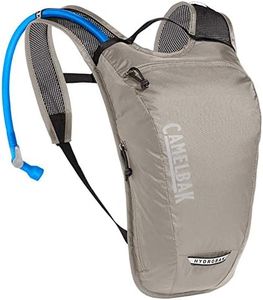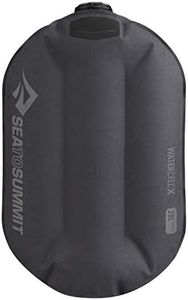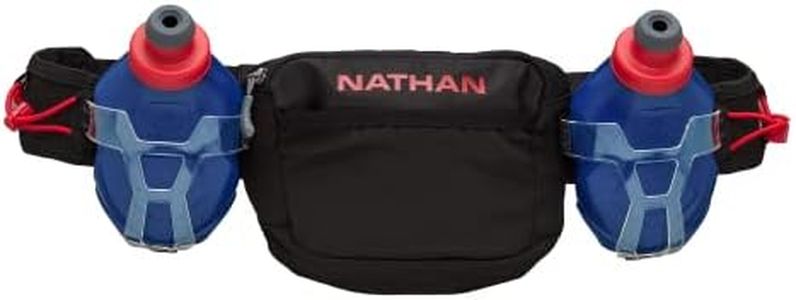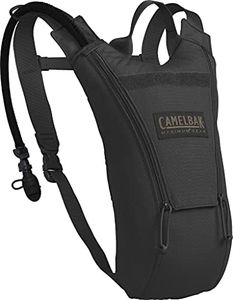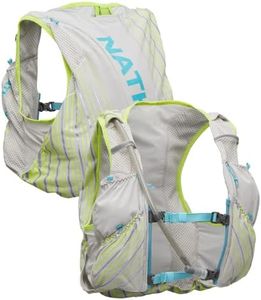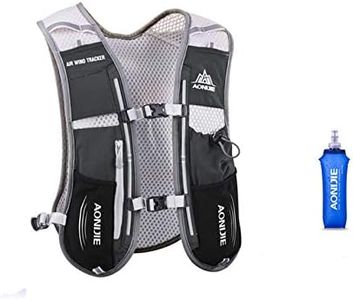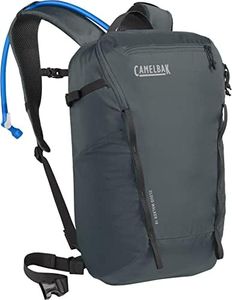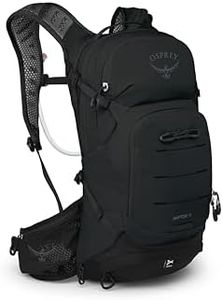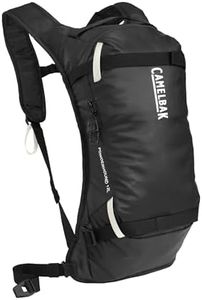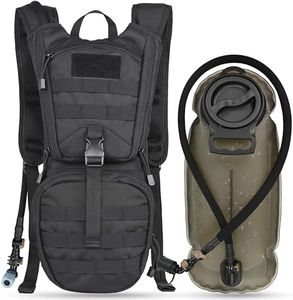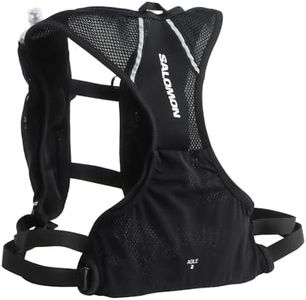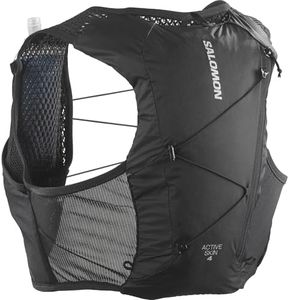We Use CookiesWe use cookies to enhance the security, performance,
functionality and for analytical and promotional activities. By continuing to browse this site you
are agreeing to our privacy policy
10 Best Hydration Packs
From leading brands and best sellers available on the web.#1
Winner
Buying Guide for the Best Hydration Packs
Choosing the best hydration pack involves thinking about how you'll use it, how much water you'll need to carry, and what other items you'll want to bring along. These packs are great for activities like hiking, running, biking, or even long walks, as they let you sip water without stopping. When picking a hydration pack, you’ll want to balance comfort, capacity, and practicality, making sure it matches both your activity and your personal preferences.Reservoir CapacityReservoir capacity tells you how much water the hydration pack can carry, usually measured in liters. This is important because it determines how long you can stay hydrated without refilling. Packs often range from around 1 to 3 liters—1 liter is great for short outings or running, 2 liters is a good middle ground for most people and activities, while 3 liters is best for longer hikes, biking trips, or areas where water isn’t available. Pick a capacity based on the duration and intensity of your activity: shorter or less demanding activities need less water, while longer, sweaty adventures need more.
Pack Storage CapacityPack storage capacity refers to the amount of space left over for storing things like snacks, extra clothing, or gear, aside from the water reservoir. This is usually measured in liters too, ranging from very small (5 liters or less, mainly for essentials) to large (20 liters or more, for longer treks or day-long outings). If you only need water and maybe a phone or keys, go for a smaller capacity; if you plan to carry lunch, a camera, or a warm layer, look for a bigger pack.
Fit and ComfortFit and comfort are about how the pack feels on your back and shoulders. Packs are often designed for certain activities—running packs are snug and bounce-free, hiking packs have more padding, and biking packs consider how you lean forward. Some even offer gender-specific fits. Adjustable straps help you tailor the pack to your body. Try on different shapes and sizes, if you can, and think about how long you'll wear it. Good fit prevents chafing and soreness, making your activity more enjoyable.
Ease of CleaningDrinking tubes and reservoirs can get grimy, so ease of cleaning is important for keeping things fresh and free of mold. Some reservoirs have large openings that make it easy to reach inside, while others may be harder to clean. If you want low maintenance, pick a reservoir that opens wide or is labeled as easy to clean. Think about whether you’re willing to hand-clean, or if you want dishwasher-safe parts.
Drinking Tube and ValveThe drinking tube and valve determine how easy it is to sip water on the go. Bite valves let you drink without using your hands, and some have shutoff switches to avoid leaks. Some tubes are insulated to help keep your water cool in hot weather. Choose a system that feels comfortable to use during your activity and make sure it’s accessible while you’re moving.
Durability and MaterialHydration packs are made from different materials, affecting how tough they are and how much they weigh. Lightweight packs are good for running, while more rugged materials are ideal for rougher activities like hiking or mountain biking. Check for reinforced seams, tough zippers, and strong straps if you expect to use it often or in demanding conditions. Match durability to your typical use: the rougher your adventures, the tougher your pack should be.


